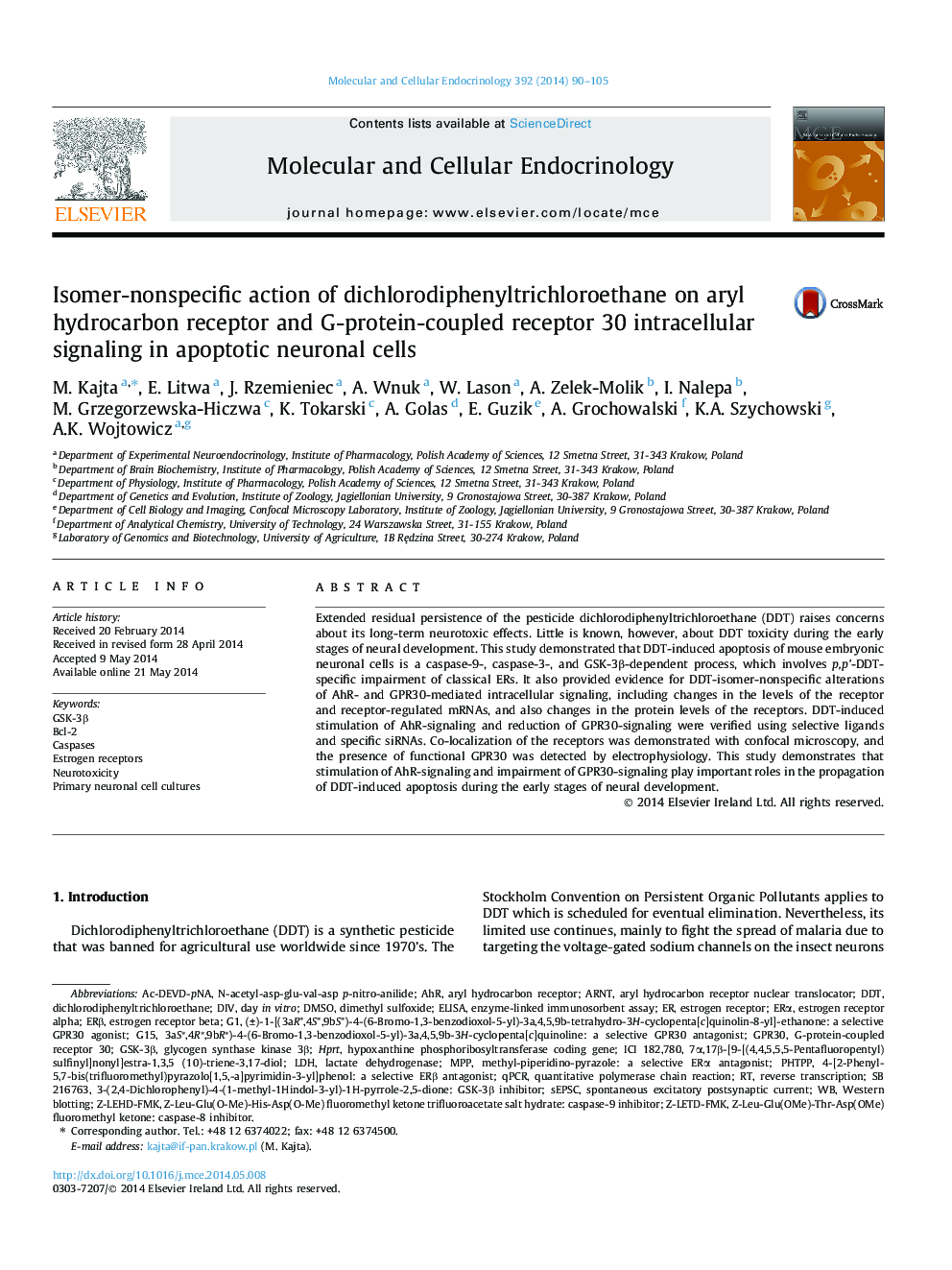| Article ID | Journal | Published Year | Pages | File Type |
|---|---|---|---|---|
| 8477190 | Molecular and Cellular Endocrinology | 2014 | 16 Pages |
Abstract
Extended residual persistence of the pesticide dichlorodiphenyltrichloroethane (DDT) raises concerns about its long-term neurotoxic effects. Little is known, however, about DDT toxicity during the early stages of neural development. This study demonstrated that DDT-induced apoptosis of mouse embryonic neuronal cells is a caspase-9-, caspase-3-, and GSK-3β-dependent process, which involves p,p'-DDT-specific impairment of classical ERs. It also provided evidence for DDT-isomer-nonspecific alterations of AhR- and GPR30-mediated intracellular signaling, including changes in the levels of the receptor and receptor-regulated mRNAs, and also changes in the protein levels of the receptors. DDT-induced stimulation of AhR-signaling and reduction of GPR30-signaling were verified using selective ligands and specific siRNAs. Co-localization of the receptors was demonstrated with confocal microscopy, and the presence of functional GPR30 was detected by electrophysiology. This study demonstrates that stimulation of AhR-signaling and impairment of GPR30-signaling play important roles in the propagation of DDT-induced apoptosis during the early stages of neural development.
Keywords
Ac-DEVD-pNaPHTPPGSK-3βERαERβdichlorodiphenyltrichloroethanesEPSCBcl-2ARNTGPR30HprtMPPZ-LEHD-FMKqPCRG15AHRG-protein-coupled receptor 30DMSOaryl hydrocarbon receptor nuclear translocatorICI 182,780ELISAEnzyme-linked immunosorbent assayspontaneous excitatory postsynaptic currentDIVDDTDimethyl sulfoxideday in vitroreverse transcriptionNeurotoxicitylactate dehydrogenaseLDHquantitative polymerase chain reactionWestern blottingCaspasesGlycogen synthase kinase 3βaryl hydrocarbon receptorEstrogen receptorEstrogen receptor alphaEstrogen receptor betaestrogen receptors
Related Topics
Life Sciences
Biochemistry, Genetics and Molecular Biology
Cell Biology
Authors
M. Kajta, E. Litwa, J. Rzemieniec, A. Wnuk, W. Lason, A. Zelek-Molik, I. Nalepa, M. Grzegorzewska-Hiczwa, K. Tokarski, A. Golas, E. Guzik, A. Grochowalski, K.A. Szychowski, A.K. Wojtowicz,
